This room reproduces the environment of a station of the first half of the twentieth century. Inside we find real railway material, one of the largest railway models among those open to the public on public display and finally, in the lateral showcases you can see a complete series of locomotives’ models.
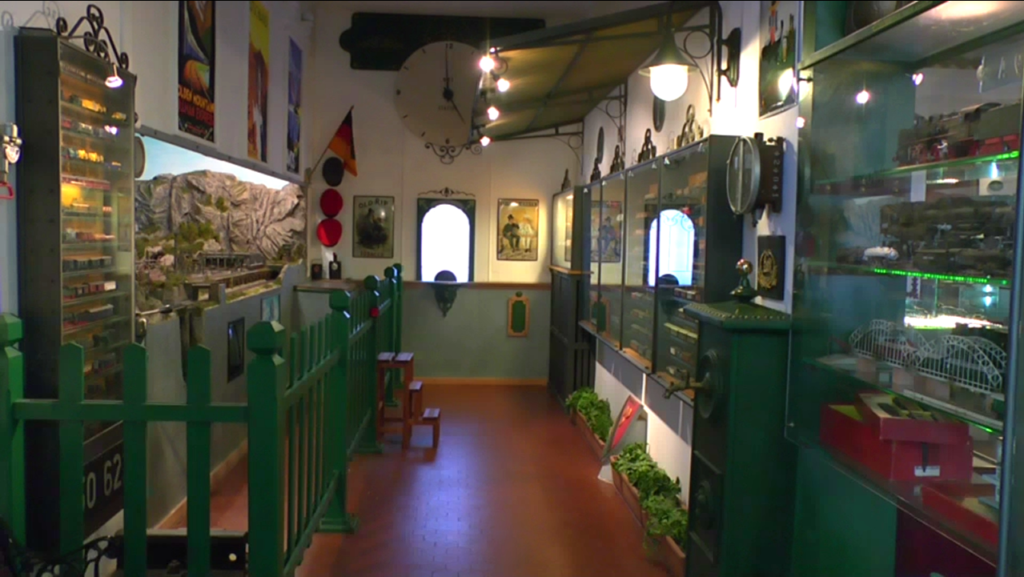
The large scale model of the railway was made by museum’s members according to traditional model-making techniques and it reproduces a really existing country, Waldbrunn, in Germany, and it dates back to 1950s. The fence is used to keep visitors at a certain distance from the display, and form a theater proscenium with the wall lowered it creates a theatre proscenium which allows you to enjoy the entire landscape.
In the showcases on the walls, you can admire an important collection of trains of various companies. We would like to bring to your attention the Mallard locomotive, in the large rectangular showcase next to the clock, which was painted in blue according to the British tradition that required colored locomotives.
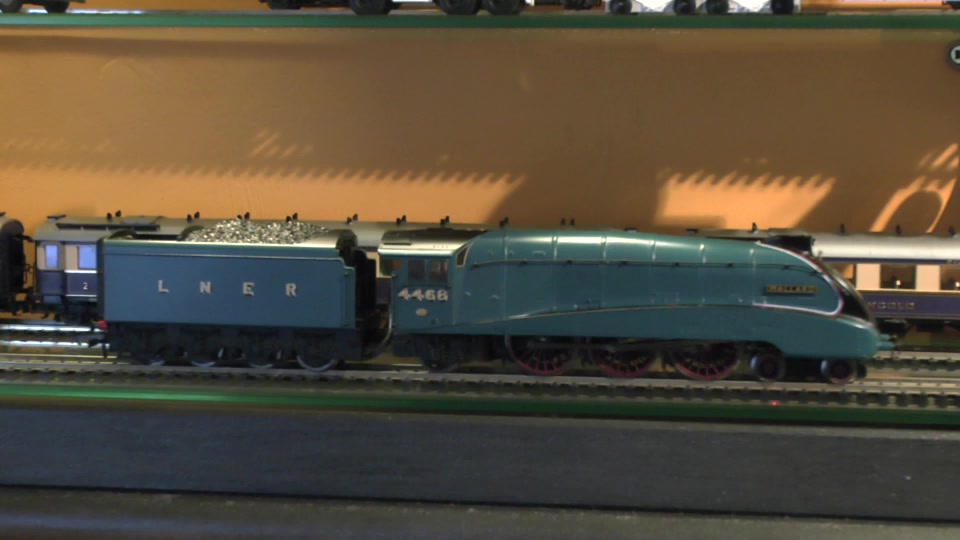
The peculiarity of this model is that it is a steam train and it perfectly works. The model on display was produced by the Hornby company. This name may not sound familiar to you, but it is the same company that in 1901 created one of the most famous games of all time: the “Meccano”.
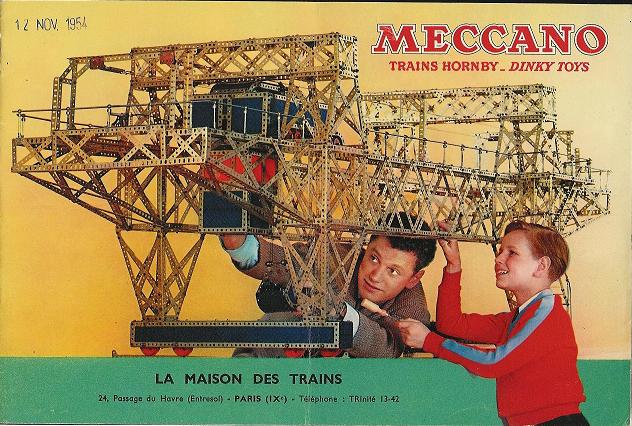
And now let’s talk about one of the most curious locomotives in the history of railways: the Schienenzeppelin locomotive. Designed and developed by the Hannover-Leinhausen mechanic workshops in 1929. Only a single example was ever built which, due to safety concerns, remained a traveling prototype- locomotive.
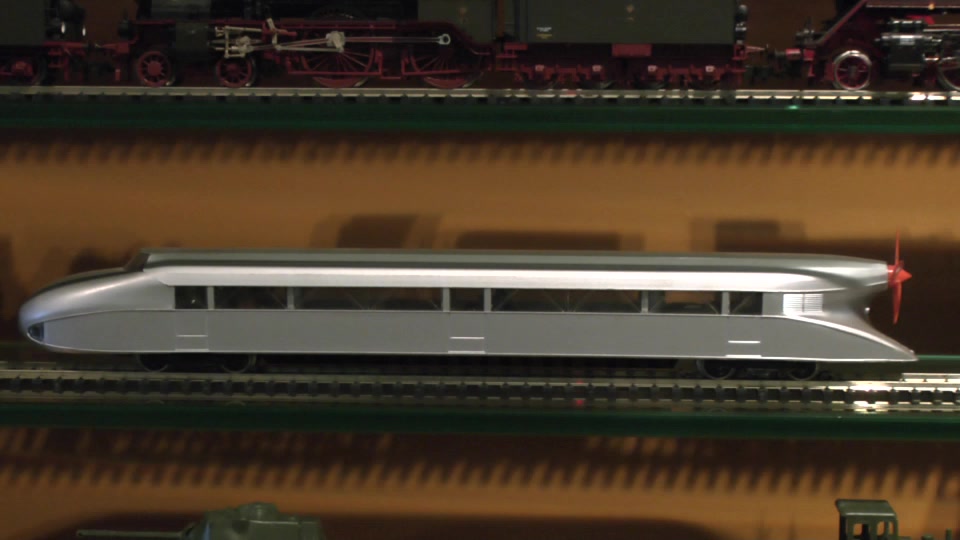
The body of this railcar had some resemblance to a Zeppelin airship and for this reason it was named Schienenzeppelin which means “Rail Zeppellin”. Its shape and silver livery, the spartan interior designed in pure Bauhaus style helped allowed it to immediately become an icon of the nascent modernity.
The propulsion was produced by a water-cooled aeronautical BMW engine of 600hp. This propelled a fixed pitch propeller made of ash wood initially with four blades, which then became a two-blade propeller. His performances were extraordinary. On June 21, 1931 on the Berlin-Hamburg line, the Schienenzeppellin set a new world speed record reaching the incredible speed of 230 km /h.
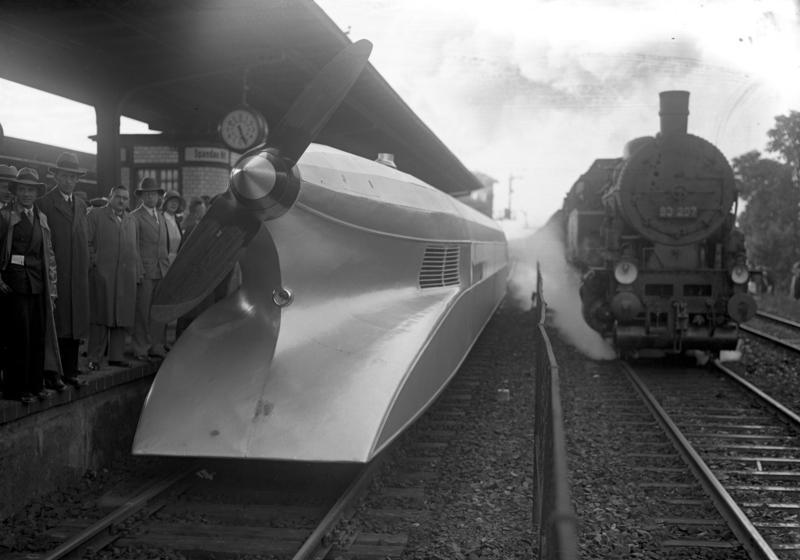
Despite its truly impressive performances for the time, the Schienenzeppelin project failed, mainly because of the danger of using a propeller in crowded stations and the serious technical issues concerning how to add more wagons to form a train, given its constructive form. In 1939, after fading for some years into oblivion oblivion, the Rail Zeppelin was finally dismantled to obtain useful material to meet Germany’s war needs.
In our collection, there are also models of the first American trains, those with open cars that evoke images of vast prairies and wide rivers. In the other display case you can see the Mallet locomotive, also known as “Big Boy”, the largest steam locomotive ever built.

This locomotive, of which only 25 units were produced, was built in the United States between 1941 and 1944. These machines were used until 1962. The “Big Boy” was a very unconventional locomotive because it worked even with low-quality coal maintaining unmatched pulling power, allowing to significantly reduce operating costs. Big Boy locomotives were employed by the “Union Pacific Railroad”. They covered lines that ran across Utah and Wyoming carrying a load that could weight up to 3600 tons even up to steep slope. Currently there are only eight example left, all exhibited in American museums.


